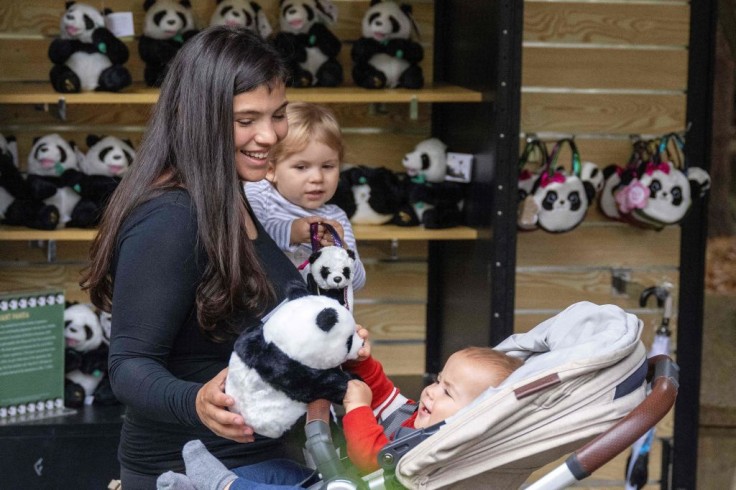
Parenting is an intricate dance of joy and challenges, and mastering the art of potty training is a significant milestone. For busy parents seeking a gentle and effective approach, elimination communication provides a unique method centered on understanding and responding to a baby's natural cues.
Elimination Communication (EC) is a potty training method that centers around the belief that babies instinctively communicate when they need to relieve themselves. Once a parent discerns their child's unique cues, they can position the baby over a potty and use a distinct sound, such as a whistle or hiss, to prompt the baby to pee or poop on demand.
In this approach, diapers become more of a contingency plan rather than the primary repository for bodily waste.
Understanding Elimination Communication: A Gentle Approach to Potty Training
Advocates of elimination communication argue that it expedites the potty training process, aligns with eco-conscious practices by reducing diaper usage, and is budget-friendly. Additionally, there's a perceived decrease in the risk of diaper rashes, as babies spend minimal time in soiled diapers.
Adriane Stare, a mother in Brooklyn, New York, employed elimination communication with her sons Damien and Loren, opting for the potty just before applying a fresh diaper. This approach not only resulted in fewer diaper changes but also reinforced the association between the potty and the urge to go. Both children were successfully diaper-free by the age of 2, except during naps, nighttime, and extended road trips.
In this comprehensive guide, we'll delve into the top 10 practical tips and tricks to seamlessly integrate elimination communication into your bustling lifestyle.
10 Practical Tips and Tricks for Elimination Communication
1. Start Early, Stay Consistent:
Initiate the elimination communication journey as early as possible, aligning with your baby's natural cues. Consistency is the linchpin; establish a routine to make bathroom breaks predictable, promoting a seamless transition from diapers to independence.
2. Observe and Learn Baby's Cues:
Pay close attention to your baby's signals for both bowel movements and urination. Recognizing these cues early on is crucial for successful elimination communication. Be patient, as it may take time to decode and respond consistently.
3. Create a Comfortable Potty Space:
Designate a comfortable and inviting space for your baby's potty moments. Whether using a small potty chair or a specific area with soft blankets, creating a positive association with the potty contributes to a more relaxed experience.
4. Be Patient and Positive:
Elimination communication is a learning process for both parent and child. Maintain patience and positivity throughout the journey, celebrating successes and reassuring your baby during inevitable mishaps.
5. Choose Convenient Clothing:
Opt for clothing that facilitates quick and easy removal, allowing you to respond promptly to your baby's cues. Elastic waistbands, snap closures, or simpler outfits make the elimination communication process smoother.
6. Integrate EC into Daily Routines:
Incorporate elimination communication into daily activities, such as after waking, before or after feeding, and before bedtime. Consistency in integrating potty breaks into routine fosters predictability for both parent and child.
Read Also: Top 5 Best Nursing Bras Every New Mom Should Consider for Ultimate Comfort and Functionality
7. Communicate Openly with Caregivers:
If multiple caregivers are involved, maintain open communication about the established cues, routines, and positive reinforcement techniques. Consistency across caregivers is key to successful elimination communication.
8. Embrace Diaper-Free Time:
Allow your baby some diaper-free time to enhance their awareness of bodily sensations. Use waterproof mats or towels in designated areas to manage any potential mess. Diaper-free time supports the development of bladder and bowel control.
9. Keep Potty Time Engaging:
Make potty time enjoyable by incorporating activities like singing songs, reading books, or introducing a special toy. Creating a positive experience around potty time encourages your baby's cooperation.
10. Adapt to Your Child's Progress:
Every child progresses uniquely; be flexible and adapt your approach based on your child's development. If signs of increased independence emerge, gradually transition to using the regular toilet.
Embracing elimination communication as a potty training method offers a unique and connection-centered approach for busy parents. By implementing the top 10 practical tips and tricks provided, you can navigate this developmental milestone with confidence, fostering a strong bond with your child while promoting independence.
Remember, the key lies in starting early, staying consistent, and adapting to your child's progress. Through patience, positive reinforcement, and a commitment to decoding your baby's cues, you not only streamline the potty training process but also contribute to a more eco-conscious and budget-friendly parenting experience.
As you embark on this journey, may these insights empower you to make elimination communication an enriching and rewarding chapter in your parenting adventure.
Related Article: Child with COVID-19? Essential Do's and Don'ts for Every Parent
